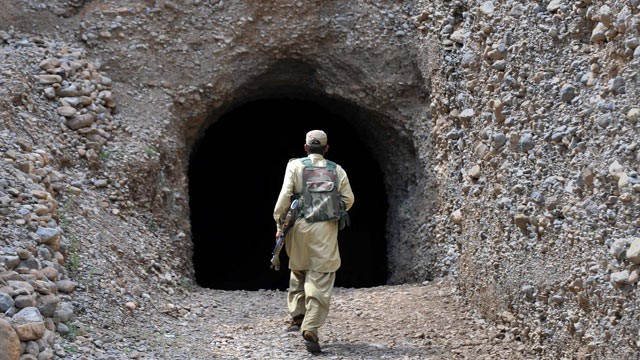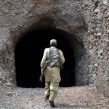
The Looming Storm in Pakistan’s Kurram Agency
Publication: Terrorism Monitor Volume: 10 Issue: 5
By:

Security has worsened significantly in Pakistan’s Kurram Agency this year. In the latest incident, Pakistani fighter jets responded to a series of attacks by bombing militant positions in the Kurram and Orakzai tribal agencies on March 1, killing an estimated 22 Islamist fighters (Dawn [Karachi], March 1; Central Asia Online, March 1). This rise in violence can be attributed to the area’s increasing strategic importance. Physically jutting into Afghanistan, Kurram is an attractive haven for fighters fleeing from drone strikes in North Waziristan and is the ideal entry point into Afghanistan for the Haqqani Network. Therefore, it is crucial for the Haqqani Network and the Inter-Services Intelligence (ISI) elements that support them to marginalize any group that could disrupt this flow of fighters (see Terrorism Monitor, December 16, 2010). The most significant obstacles are the Shi’a Turi and Bangash tribes and the Tehrik-e Taliban Pakistan (TTP) under the command of Hakimullah Mahsud (see Terrorism Monitor, April 17, 2010). Although the ISI has recently been able to break up and court portions of the TTP, the bloodshed has not abated in Kurram.
A significant coup for the Haqqani Network and the Pakistan security forces occurred in June of 2011. The TTP leader in Kurram, Fazal Saeed, announced that he was leaving the group and forming the Tehrik-e Taliban Islami (TTI). [1] Saeed explained the reasons behind his departure by stating, "I repeatedly told the leadership council [of the TTP] that they should stop suicide attacks against mosques, markets and other civilian targets… I have therefore decided to quit the TTP" (AFP, June 28, 2011). Coming from a man that recently took credit for the bombing of a Shi’a neighborhood in Parachinar that killed 43 civilians, this logic seems flawed (Express Tribune [Karachi], February 17; February 20). Haqqani Network representatives and Pakistan security elements had both sought to convince Saeed to abandon his anti-state agenda and join their fight. Similar agreements had been reached in recent years with Mullah Nazir in South Waziristan and Hafiz Gul Bahadar in North Waziristan (see Terrorism Monitor, April 2009). Given the increasing importance of Kurram, the recruitment of Saeed was critical. By altering his loyalties, he weakened the TTP and gave the Haqqani Network a buttress against Shi’a forces in the area.
It was no coincidence that shortly after Saeed’s announced departure there was a Pakistani military offensive to clear “miscreants” in Central Kurram (Daily Times [Lahore], July 7, 2011). It was also no coincidence that Operation Azmari Ghero was opposed by leaders of the Turi and Bangash tribes, who have taken to calling Parachinar “the Pakistani Gaza” (Dawn [Karachi], December 12, 2011). Meanwhile, the Saeed-controlled western valley of Lower Kurram (a critical entry point from North Waziristan) was left untouched by Pakistani security forces (South Asian Terrorism Portal, February 21). This violence has left many dead and internally displaced, and has dashed hopes of opening the Sunni blockade of the Tal-Parachinar road, the only route by which the Shi’a of Upper Kurram can reach Peshawar and the interior of Pakistan.
Peace deals were established between Shi’a and Sunni tribal leaders in February and October, 2011, but it is unclear if these were valid attempts to achieve peace or a mere ruse intended to give Haqqani Network fighters some breathing room. Either way, both deals eventually collapsed and the Haqqani Network was able to continue using Kurram for entry into Afghanistan’s Paktia province. Situated less than 100 km from Kabul, this is likely the access point of choice for Haqqani’s “Kabul Attack Network,” the group responsible for several major attacks in Kabul in 2011. The February peace deal was so critical to Haqqani Network operations that Jalaluddin Haqqani’s brothers, Khalil and Ibrahim, were both reported to have attended the talks (Dawn, October 21, 2010).
Unfortunately, this sectarian bloodshed only constitutes a portion of the violence in Kurram. The TTP remains a potent anti-state fighting force, especially in eastern Kurram along the Orakzai and Hangu borders. In the last few months, the Pakistani Frontier Corps has suffered significant losses at the hands of the TTP (Express Tribune, February 2). Many of the battles are currently taking place in the Shahedano Dand area, a vital thruway for those coming from North Waziristan. Any hope of making peace with Hakimullah may have vanished after the TTP leader appeared in the execution video of former Pakistani Army officer “Colonel Imam” in January, 2011. Imam was a legendary member of the Special Services Group and the ISI (Telegraph, January 24, 2011). Hakimullah will likely not be forgiven for taking part in the humiliation and murder of such a revered mujahid.
Conclusion
The lack of security in North Waziristan and the instability of the TTP have put increased pressure on an area usually known only for its sectarian battles. There is no end to the violence in sight for the Turi and Bangash tribes, who remain surrounded by sectarian enemies, and there will always be irreconcilable elements within the Pakistani Taliban. As Afghanistan’s fighting season approaches, clearing areas of TTP and Shi’a elements will become more important for the Haqqani Network and their handlers, likely making 2012 the most violent year in recent history for the Kurram Agency.
John Ty Grubbs served as a Human Terrain Analyst in Khost and Paktia in 2011. All views expressed are his own.
Note:
1. For a profile of Fazal Said Haqqani, see Militant Leadership Monitor, August 1, 2011.





